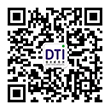Water cup EU (EC) No1935/2004 food contact material testing
Date:2025-05-28 10:19:13 Classification
:【question】 Visits:791
EU (EC) No1935/2004 food contact material testing for water cups. EU Regulation (EC) No1935/2004 is a framework regulation on food contact materials and articles, which aims to ensure that these materials and articles do not contaminate food, thereby protecting the health of consumers. For food contact materials such as water cups, the regulation stipulates specific testing requirements and standards.
Testing standards and requirements
According to EU Regulation (EC) No1935/2004, water cups, as food contact materials, need to comply with the following testing standards and requirements:
1. Migration test:
- Simulate food contact: Evaluate whether chemicals in water cups migrate into food.
- Check whether it exceeds the upper limit specified by the regulations: Ensure that the content of migrating substances is within a safe range.
2. Dissolved substance test:
- Evaluate the solubility of chemicals: Check whether the chemicals in water cups will dissolve and release into food during contact with food.
3. Physical and mechanical properties test:
- Evaluate physical properties: such as durability, wear resistance, etc., to ensure that the water cup will not be physically damaged during use.
Specific test items
Depending on the different materials, the test items and standards of the water cup are also different. The following are some common material testing items:
1. Plastic water cup:
- Testing standard: (EU) No10/2011
- Testing items:
- Migration test
- Dissolved substance test
- Physical and mechanical properties test
2. Ceramic water cup:
- Testing standard: (EU) 2016/403
- Testing items:
- Lead (Pb) dissolution
- Cadmium (Cd) dissolution
- Glaze integrity
3. Glass water cup:
- Testing standard: EU general requirements
- Testing items:
- Lead (Pb) dissolution
- Cadmium (Cd) dissolution
Compliance path
In order to ensure that the water cup meets the requirements of EU Regulation (EC) No1935/2004, companies need to follow the following compliance path:
1. Raw material certification:
- Ensure that the raw materials used meet relevant standards, such as lead-free and cadmium-free declarations, AP (2002) 1 compliance certificates, etc.
2. Process control nodes:
- Monitor key nodes in the production process, such as kiln temperature uniformity, molding curing degree, etc.
3. Grading testing plan:
- Grading tests for semi-finished products and finished products to ensure that all products meet regulatory requirements.
4. Certification and labeling management:
- Mark compliance with (EU) 1935/2004 and applicable temperature range, and add LFGB knife and fork logo when necessary.
Future trends
EU regulations are constantly updated, and companies need to pay attention to the latest regulatory developments. For example, in 2025, the EU plans to tighten the ceramic lead limit from 0.2mg/L to 0.1mg/L. Companies need to prepare in advance and switch to safer materials and technologies.
Through the above testing standards and compliance paths, companies can ensure the compliance and safety of water cups in the EU market, thereby protecting the health of consumers.




 Shen Gongwang Security: 44030602006947
Shen Gongwang Security: 44030602006947